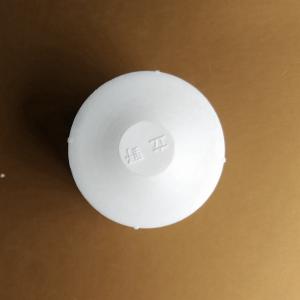Plastic pipe fittings are an essential component in many home projects, from plumbing and irrigation to gas and electrical systems. They come in a variety of shapes, sizes, and materials, each designed to serve a specific purpose. In this guide, we’ll explore the different types of plastic pipe fittings, their uses, and how to choose the right one for your project. Whether you’re a DIY enthusiast or a professional contractor, understanding the ins and outs of plastic pipe fittings will help you get the job done right.
The World of Plastic Pipe Fittings
Plastic pipe fittings are made from various types of plastic materials, including PVC, PEX, ABS, and CPVC. Each material has its own set of properties that make it suitable for different applications. For example, PVC is lightweight, easy to work with, and resistant to corrosion, making it ideal for drain, waste, and vent systems. PEX, on the other hand, is flexible and durable, which makes it perfect for radiant heating and cooling systems.
Choosing the Right Material
When selecting plastic pipe fittings, it’s crucial to consider the material that best suits your needs. Here are some factors to keep in mind:
– Durability: How long do you need the fittings to last? Some materials are more durable than others.
– Temperature Range: What temperatures will the fittings be exposed to? Different materials can handle different temperature ranges.
– Chemical Resistance: Will the fittings be exposed to chemicals? Some materials are more resistant to certain chemicals than others.
– Cost: What’s your budget? Some materials are more expensive than others, but they may offer better performance or longevity.
Types of Plastic Pipe Fittings
There are several types of plastic pipe fittings, each with its own unique function. Let’s take a look at some of the most common ones:
– Elbows: These fittings are used to make 90-degree turns in a pipe run. They come in different sizes and materials.
– Tees: T-shape fittings that allow you to branch off from the main pipe line to a secondary line.
– Couplings: Used to connect two pieces of pipe together end-to-end.
– Unions: Similar to couplings, but they allow for disconnection without cutting the pipe.
– Reducers: Used to reduce the size of the pipe at a specific point.
– Caps: Used to close off the end of a pipe.
– Bushings: Used when adapting a pipe to a different size.
The Importance of Compatibility
One of the most important things to remember when working with plastic pipe fittings is compatibility. Not all fittings are compatible with all types of pipes or other fittings. It’s essential to ensure that the fittings you choose are designed to work with the specific type of plastic pipe you’re using. This will prevent leaks and ensure a secure connection.
Installation Tips
Installing plastic pipe fittings can be a straightforward process if you follow these tips:
1. Measure Twice, Cut Once: Always double-check your measurements before cutting the pipe to avoid mistakes.
2. Clean the Pipes: Ensure that the pipe ends are clean and free of debris before fitting them together.
3. Use the Right Tools: Use appropriate tools for cutting, deburring, and fitting pipes to ensure a proper fit and avoid damage.
4. Check for Tightness: After fitting, check to make sure the connection is tight and secure.
5. Test for Leaks: Once the system is assembled, test it for leaks to ensure everything is functioning correctly.
Maintenance and Care
Proper maintenance and care can extend the life of your plastic pipe fittings:
– Regular Inspections: Periodically inspect the fittings for signs of wear or damage.
– Clean Regularly: Keep the fittings clean to prevent buildup that could affect performance.
– Replace Damaged Parts: If a fitting is damaged, replace it immediately to prevent leaks or failures.
When to Call a Professional
While many home projects can be tackled with a bit of DIY spirit, there are times when it’s best to call in a professional. If you’re dealing with complex systems, such as gas lines or electrical conduits, it’s wise to consult with an expert to ensure safety and compliance with local regulations.
The Bottom Line
Plastic pipe fittings are a versatile and cost-effective solution for a wide range of home projects. By understanding the different types, materials, and installation best practices, you can ensure that your plumbing, irrigation, and other systems are set up for success. Remember, the right fitting for the job can make all the difference in the performance and longevity of your project. So, the next time you’re at the hardware store, take a moment to consider your options and choose the plastic pipe fittings that will work best for you.

